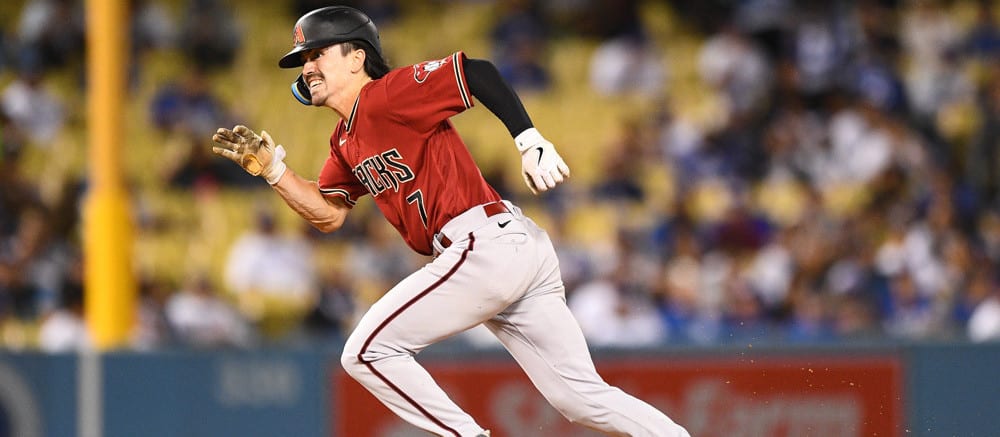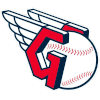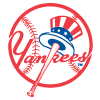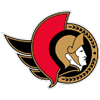Exactly how much ADP (Average Draft Position) should factor into your draft preparation process is an evergreen debate topic among fantasy players, but most reasonable people will agree that it should play at least some small role. Unless you're the best fantasy player in the world, the wisdom of crowds has something to offer.
In the past, ADP data has mostly come from very large crowds, i.e., all drafts held on a specific platform. An "expert ADP" wasn't something that was easy to glean from the older industry leagues, LABR and Tout Wars, as those consist of groups of leagues that all have slightly different rules or player pools. The uniqueness of each league within LABR and Tout Wars is worth preserving, as it provides coverage of and visibility for formats beyond 15-team mixed leagues, but it does mean there's no straightforward way to combine the wisdom of those particular crowds.
Recent additions to the industry-league scene EARTH and TGFBI do provide the possibility of such an "expert ADP," however, as these newer competitions feature groups of leagues full of experienced drafters all playing under the same rules, with an accompanying overall component in each. TGFBI consists of online slow drafts and kicked off Monday, as you'll undoubtedly be aware if you have a Twitter account. EARTH features 11 different in-person drafts, each representing one region of the United States or Canada, which took place between Feb. 10 and Feb. 25. (For more information about EARTH, here's the league charter
Exactly how much ADP (Average Draft Position) should factor into your draft preparation process is an evergreen debate topic among fantasy players, but most reasonable people will agree that it should play at least some small role. Unless you're the best fantasy player in the world, the wisdom of crowds has something to offer.
In the past, ADP data has mostly come from very large crowds, i.e., all drafts held on a specific platform. An "expert ADP" wasn't something that was easy to glean from the older industry leagues, LABR and Tout Wars, as those consist of groups of leagues that all have slightly different rules or player pools. The uniqueness of each league within LABR and Tout Wars is worth preserving, as it provides coverage of and visibility for formats beyond 15-team mixed leagues, but it does mean there's no straightforward way to combine the wisdom of those particular crowds.
Recent additions to the industry-league scene EARTH and TGFBI do provide the possibility of such an "expert ADP," however, as these newer competitions feature groups of leagues full of experienced drafters all playing under the same rules, with an accompanying overall component in each. TGFBI consists of online slow drafts and kicked off Monday, as you'll undoubtedly be aware if you have a Twitter account. EARTH features 11 different in-person drafts, each representing one region of the United States or Canada, which took place between Feb. 10 and Feb. 25. (For more information about EARTH, here's the league charter, written by commissioner Dave McDonald.)
The ADP data from the 11 EARTH leagues will be the focus of this article, which will highlight some general trends as well as some specific players whose EARTH ADP stands out. I'll end with a bunch of tables featuring the most liked and disliked players in each part of the draft by EARTH drafters. If you're interested in digging through all the data yourself, the full spreadsheet is available here. References to NFBC ADP in this article and in the spreadsheet are from all drafts that took place over the same stretch as the EARTH drafts.
1) EARTH drafters aren't taking Corbin Carroll early in the first round.
The 23-year-old won Rookie of the Year honors last season while hitting .285 with 25 homers and a very fantasy-friendly 54 steals. The performance didn't look like a fluke according to his expected stats nor his scouting reports. If you want top-of-the-scale speed paired with a very good bat, your choices are Ronald Acuna (selected first overall in every EARTH draft), Bobby Witt (usually selected second and never later than fourth) or Carroll. That's it.
So, why are the experts so worried about him? If there's one lesson I've learned from my experiences in similar leagues over the past few years, it's that veteran fantasy players really do not want to mess up their first few picks. While there are certainly still some swashbuckling high-stakes players and industry experts, the majority of the top players seem to prefer playing it safe early and then taking a few chances in the later rounds.
Carroll's shoulder is something a group of drafters that leans toward early caution wants no part of. A torn labrum cost Carroll nearly all of the 2021 season, and he appeared to have suffered another serious injury to the same shoulder in early July. Carroll himself reportedly feared that his season was over, but his MRI came back clean and he was back on the field five days later. His slugging percentage dipped nearly 100 points (from .549 to .455) after the injury, however, which raises concerns that his shoulder issues may not be fully behind him. If your top priority when making your first-round pick is making sure you don't get it wildly wrong, avoiding the guy who's seemingly at risk of popping his own shoulder out of its socket every time he swings is a smart move.
That said, it's not as if EARTH drafters were anywhere close to completely out on Carroll. We're only talking about a dip in ADP from 5.0 in all NFBC drafts to 6.0 in EARTH. The battle between Carroll, Kyle Tucker, Fernando Tatis and Spencer Strider for picks five through eight didn't have a clear winner, but Carroll slipped below seventh just once. The crucial insight from EARTH, however, is that no one selected him third and only once was he even taken fourth. In no league did anyone take Carroll ahead of either Witt or Julio Rodriguez, and he went ahead of Mookie Betts just twice in 11 drafts. Despite Carroll's similarities to Witt, I think I'm going to listen to the collective caution here and separate them by a spot or two in our next Roundtable update.
2) Aces are being pushed up, but Gerrit Cole may have missed the memo.
The top eight starters all went in the same order in both EARTH and NFBC ADP, but the group as a whole went much earlier in EARTH drafts:
| Pitcher | EARTH ADP | NFBC ADP | Diff |
|---|---|---|---|
| Spencer Strider | 6.9 | 8.9 | -2.0 |
| Gerrit Cole | 14.8 | 15.9 | -1.1 |
| Corbin Burnes | 18.7 | 22.2 | -3.5 |
| Zack Wheeler | 22.4 | 30.1 | -7.7 |
| Kevin Gausman | 25.5 | 31.8 | -6.3 |
| Luis Castillo | 28.1 | 34.5 | -6.4 |
| George Kirby | 31.7 | 40.2 | -8.5 |
| Pablo Lopez | 32.7 | 41.3 | -8.6 |
The phenomenon of aces getting pushed up the board is nothing new, and it makes plenty of sense in an era where the number of pitchers who can be trusted to produce elite per-inning numbers over a high workload is getting smaller and smaller. With so few trustworthy starters, experienced drafters are trying that much harder to get at least one pitcher on whom they can rely.
So why was Cole almost exempt from that trend? You could argue it's because it's hard to move up much when you're already as high in the draft as he is, but Strider managed to move up two spots in ADP despite starting seven spots higher. No other pitcher took Cole's spot as the second off the board in any EARTH draft, but the fact that he barely budged while the lesser members of the top eight moved much closer to him seems significant.
Yes, Cole is coming off a Cy Young season in which he posted a 2.63 ERA and 0.98 WHIP, but the underlying numbers aren't quite as encouraging. His 3.63 SIERA was his highest mark since his final season in Pittsburgh back in 2017, up 0.8 runs from his 2.83 SIERA across the previous five years. That jump is largely due to a big drop in strikeout rate; at 27.0 percent, it was also his worst mark since 2017 and trailed his 34.9 percent rate from the prior five years by nearly eight points.
If the whiffs come all the way, or even partially, back for Cole this season, he'll be a fine value in the late first or early second round, especially as ace prices continue to rise as we head toward the NFBC Main Event. But the fact that he didn't receive the same helium as the rest of the pool of potential aces in EARTH should tell us something. If the strikeouts don't come back, Cole could be a slight disappointment, and if they take another step back in his age-33 season, he could look very out of place as a first-rounder.
3) No player in the first two rounds fell further than Elly De La Cruz.
If you've read this far, you know why: The veteran drafters who make up the EARTH leagues skew much more strongly than the general public toward a conservative approach in the early rounds. A high-variance player like De La Cruz, who could finish as a top-five value or outside the top 250, was never going to be to this group's taste. Until the final EARTH draft took place on Sunday, his minimum pick (27) in EARTH was higher than his average NFBC pick (25).
That means you're going to be hard-pressed to find someone from this group who advocates for drafting De La Cruz at his ADP. Still, as the only member of the RotoWire Roundtable crew who ranked him anywhere near there, I do have to point out he went at 27 three times and once more at 28, and one person did finally take him at 22 in the last EARTH draft, ruining what would have been a much cleaner fun fact in the previous paragraph. If De La Cruz falls even a couple spots, you'll find a reasonable amount of support for taking him even among this risk-averse group.
I can't speak for the others who have drafted him, but my logic for keeping him ranked fairly high is that he actually may have a higher floor than many are giving him credit for. That floor comes from being elite in one area: speed. This is a man who called himself "the fastest man in the world" less than a week after his MLB debut and whose 100th percentile sprint speed backs that up, at least in the world of baseball.
A player with that kind of speed can't fail to be among the league leaders in steals if he's in the lineup every day, and there's plenty of reason to think he will be. De La Cruz started at shortstop in all but three games from Aug. 3 through the end of the season last year, even while hitting .199/.285/.361 over that stretch. He stole 18 bases over that two-month stretch even with a sub-.300 on-base percentage, so it's not hard to envision him stealing more than 50 this year even if his bat takes zero steps forward. And we can't rule out a sophomore-year jump at the plate similar to the one we saw with Witt, who's now the consensus No. 2 pick despite there being legitimate questions about his bat this time a year ago.
Still, the skepticism from EARTH drafters shouldn't be ignored. This is a player who struck out in over a third of his plate appearances as a rookie and did so at a consistently high rate, never dipping below 30 percent in a given month. Players who strike out this much (and relatedly, hitters who are 6-foot-5) sometimes just don't work out. Plus, his 54 percent groundball rate turned every opposing pitcher into Framber Valdez. With Cincinnati having an extra infielder to squeeze into the lineup as long as everyone is healthy, it's not hard to see De La Cruz failing to earn everyday at-bats and coming up far short of his draft-day price.
4) Nobody wants to pay for steals.
That may contribute to the relative lack of interest in De La Cruz, but the trend extends far beyond him. The following is a list of players who a) are projected ATC for at least 25 steals and b) project to provide at least half of their fantasy value in that category in 15-team mixed roto leagues. In other words, the players you draft primarily for their speed. Note the difference between their EARTH ADP and their overall NFBC ADP:
| Player | EARTH ADP | NFBC ADP | Diff |
|---|---|---|---|
| Elly De La Cruz | 31.1 | 25.2 | 5.9 |
| CJ Abrams | 42.8 | 40.8 | 2.0 |
| Nico Hoerner | 63.7 | 58.0 | 5.7 |
| Jazz Chisholm | 77.5 | 63.8 | 13.6 |
| Josh Lowe | 89.0 | 72.8 | 16.2 |
| Ha-Seong Kim | 94.7 | 83.0 | 11.8 |
| Andres Gimenez | 103.5 | 109.8 | -6.2 |
| Esteury Ruiz | 139.2 | 121.5 | 17.7 |
| Cedric Mullins | 140.3 | 138.9 | 1.4 |
| Jarren Duran | 150.5 | 151.2 | -0.8 |
| Starling Marte | 209.4 | 215.1 | -5.7 |
| Average | 103.8 | 98.2 | 5.6 |
The trend becomes even clearer when you separate the speed-first hitters in the top-100 picks from those going outside the top 100. EARTH drafters didn't want to pay the going rate for steals in the first six rounds, with all six members of that group falling at least two picks and two of them falling about a full round. With one Esteury Ruiz-shaped exception, however, speed-first players outside the top 100 were considered fairly priced or slight bargains:
| "Speed Guys" Group | EARTH ADP | NFBC ADP | Diff |
|---|---|---|---|
| First 100 Picks | 73.5 | 63.7 | 9.9 |
| After Pick 100 | 148.6 | 147.3 | 1.3 |
| After Pick 100, non-Ruiz | 150.9 | 153.8 | -2.8 |
Ruiz is worthy of a quick digression here. He finished second in the league with 67 steals, though he won't show up on the leader board unless you make sure the "qualified hitters" filter is off, as he finished with just 497 plate appearances. Every other player who stole more than 35 bases came to the plate at least 614 times, so it's not out of the question that he could blow the league away in the category if given an everyday job. EARTH drafters are quite reasonably pessimistic about that happening, however, as his pathetic 19.3 percent hard-hit rate leaves little room for projection on a bat that has produced a .248/.301/.339 line in 449 career big-league games. Even in Oakland, that's not a line that deserves everyday playing time, especially when considering that Ruiz fits best defensively in left field rather than center despite his speed.
Overall, the lack of interest in early speed was a particularly interesting development for me, as I keep ending up with speed-heavy teams. My intuitive response to the big increase in speed we saw last season was that we need to keep prioritizing speed like we used to. Yes, more speed is available, but we need so much more of it, so why would we think about the category any differently from we did in 2019? I seem to be in the minority among this strong group of drafters, so I may need to rethink that approach.
More Tables
As promised, here are EARTH drafters' favorite and least-favorite options in each part of the draft. Each table below displays the top three hitters and three pitchers in each group rather than the top six players overall. Players are grouped by their NFBC round, not EARTH round. I've excluded closers, who all rose as a group in EARTH because NFBC ADP includes some formats in which saves are much less valuable, and I've also excluded players who got injured during the middle of the two-week timeframe.
| Most Liked, First Three Rounds | EARTH ADP | NFBC ADP | Difference |
|---|---|---|---|
| Pablo Lopez | 32.7 | 41.3 | -8.6 |
| George Kirby | 31.7 | 40.2 | -8.4 |
| Zack Wheeler | 22.4 | 30.1 | -7.7 |
| Kyle Tucker | 5.7 | 7.0 | -1.3 |
| Jose Ramirez | 14.2 | 15.4 | -1.2 |
| Fernando Tatis | 6.9 | 8.0 | -1.1 |
| Most Disliked, First Three Rounds | EARTH ADP | NFBC ADP | Difference |
|---|---|---|---|
| Adolis Garcia | 48.6 | 41.8 | 6.8 |
| Elly De La Cruz | 31.1 | 25.2 | 5.9 |
| Pete Alonso | 30.3 | 25.0 | 5.3 |
| Yoshinobu Yamamoto | 47.5 | 43.5 | 4.0 |
Note: every pitcher other than Yamamoto with an NFBC ADP inside the top three rounds went even earlier in EARTH. Gerrit Cole and Spencer Strider would technically round out the above table, but it would be misleading to include them since they weren't "disliked" by EARTH drafters.
| Most Liked, Rounds 4-10 | EARTH ADP | NFBC ADP | Difference |
|---|---|---|---|
| Bailey Ober | 132.5 | 148.9 | -16.4 |
| Joe Ryan | 85.0 | 98.5 | -13.5 |
| Logan Gilbert | 59.4 | 72.4 | -13.0 |
| Andres Gimenez | 103.5 | 109.8 | -6.2 |
| Sean Murphy | 135.5 | 139.0 | -3.4 |
| Adley Rutschman | 45.5 | 48.6 | -3.2 |
| Most Disliked, Rounds 4-10 | EARTH ADP | NFBC ADP | Difference |
|---|---|---|---|
| Wyatt Langford | 173.8 | 145.1 | 28.7 |
| Jackson Chourio | 146.2 | 123.4 | 22.8 |
| Lane Thomas | 130.1 | 109.4 | 20.7 |
| Chris Bassitt | 144.3 | 136.5 | 7.8 |
| Tarik Skubal | 57.8 | 52.6 | 5.3 |
| Michael King | 147.9 | 142.8 | 5.1 |
| Most Liked, Rounds 11-23 | EARTH ADP | NFBC ADP | Difference |
|---|---|---|---|
| Zach Neto | 269.4 | 336.5 | -67.2 |
| Leody Taveras | 265.2 | 305.9 | -40.7 |
| Danny Jansen | 266.6 | 304.2 | -37.6 |
| Emmet Sheehan | 249.5 | 273.6 | -24.1 |
| Sean Manaea | 316.5 | 340.1 | -23.5 |
| Louie Varland | 301.4 | 321.2 | -19.8 |
| Most Disliked, Rounds 11-23 | EARTH ADP | NFBC ADP | Difference |
|---|---|---|---|
| Byron Buxton | 267.6 | 224.2 | 43.5 |
| Giancarlo Stanton | 315.5 | 276.6 | 38.9 |
| Kris Bryant | 268.9 | 254.8 | 32.1 |
| Alek Manoah | 326.1 | 301.4 | 24.7 |
| Paul Skenes | 327.2 | 304.1 | 23.1 |
| Lucas Giolito | 238.5 | 220.9 | 17.7 |
| Most Liked, Round 23 + | EARTH ADP | NFBC ADP | Difference |
|---|---|---|---|
| Tanner Houck | 364.6 | 533.7 | -169.0 |
| Keaton Winn | 384.7 | 553.0 | -168.3 |
| Steven Matz | 352.6 | 497.2 | -144.6 |
| Davis Schneider | 398.5 | 534.7 | -136.1 |
| Brendan Rodgers | 358.5 | 484.1 | -125.6 |
| Tyler Black | 369.8 | 492.7 | -122.9 |





































